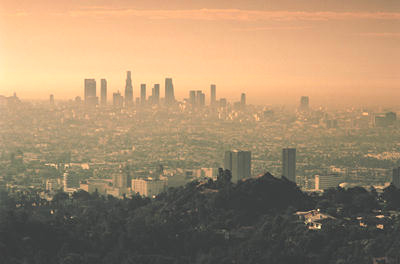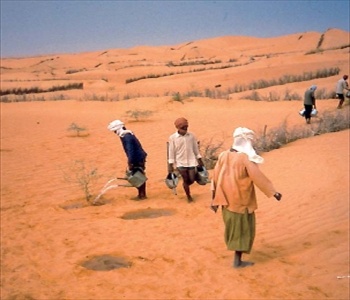Pollution and other Factors
Pollution from industry will increase tropospheric ozone levels. Ozone levels in the lower atmosphere are determined by both emissions and temperature, thus ground levels are almost certain to increase. Higher levels of ground-level ozone limit the growth of crops.
As with temperature and precipitation, the negative impact of increasing ozone on crops will offset the beneficial impact from elevated CO2 levels. At the same time, the ozone layer is becoming thinner in other areas, leading to increases in UV-B exposure. The future impact of ozone and UV-B on crops is not completely understood, as the increasing CO2 may possibly increase or decrease the effect. Increasing ozone and UV-B exposure can lead to reduced rates of photosynthesis and a number of other measures of crop stress, including sensitivity to drought.
Other Factors
Food production will be affected by a number of other factors, including rising sea level (see Module 10) that will swamp low-lying coastal areas that include some of the most productive areas of the world today. The potential area of crop production is also being reduced by desertification and salinization (increase in harmful salt levels in topsoil as a result of excess evaporation) as well as soil erosion over vast areas of the world. Soil erosion can result directly from climate change, for example, from increased precipitation in major storms. However, it is also a product of over-cultivation of crops and other poor agricultural practices.
Impact of climate change on North America
The impact of climate change (summarized in the figures below) on North American agriculture varies significantly by region. Projections suggest yield increases of 5-20 percent over the first decades of the century as a result of warming and higher CO2, with generally positive effects for the nation as a whole for much of the century. However, regions of the continent will be much more vulnerable than others. In particular, the Great Plains will likely face declining yields as a result of drought. Crops that are limited by growing season, for example, fruit in the northeastern US, will benefit from improved growing conditions, whereas those crops that are near their climate thresholds, for example, grapes in California (as a result of low rainfall) will likely face lower yields and poorer quality. Drought in California will likely impact the yields of numerous crops.




